If you’re curious about Asian cuisine dessert, you’re not alone. From light and fruity delights to rich, creamy puddings, Asian desserts are as diverse as the cultures they come from. Whether you’re looking for something traditional like Japanese mochi or something quick like Thai mango sticky rice, these sweets pack bold flavors and comforting textures. This article explores the best of Asian desserts through easy recipes, popular picks, and cultural classics, all with a modern, practical twist. If you’re short on time but big on taste, you’re in the right place. Let’s dig into the best sweets from across Asia.
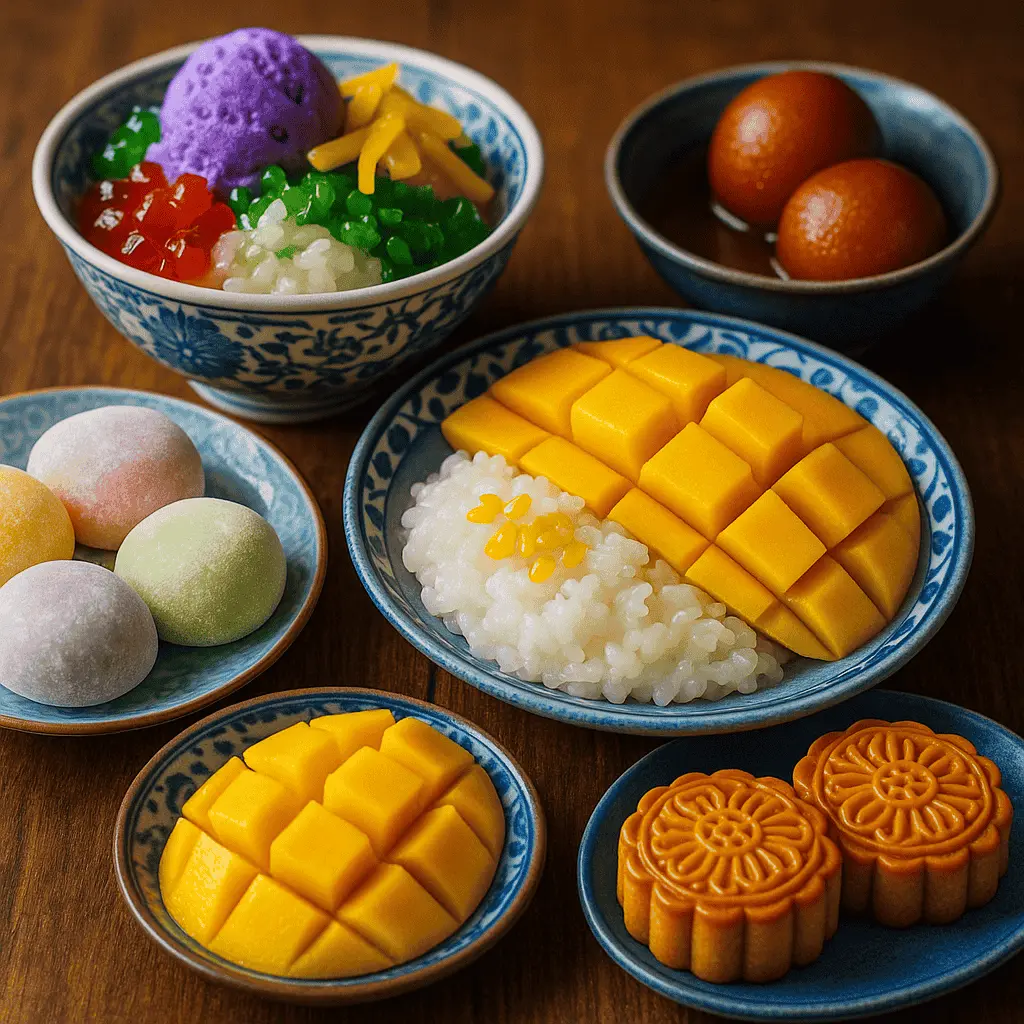
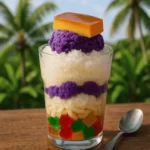
Ultimate Guide to Asian Cuisine Dessert: Authentic, Easy & Loved by All
- Total Time: 30 minutes
- Yield: 4 servings 1x
- Diet: Vegetarian
Description
A quick roundup of classic and modern Asian cuisine desserts you can easily recreate at home. Features mochi, mango sticky rice, halo-halo, and more.
Ingredients
1 cup glutinous rice
1 cup coconut milk
2 tbsp sugar
1/4 tsp salt
1 ripe mango, sliced
Tapioca pearls
Red bean paste
Matcha powder
Instructions
1. Rinse and soak glutinous rice for 2 hours
2. Steam rice until soft and sticky
3. In a pan, heat coconut milk with sugar and salt
4. Pour coconut mixture over warm rice, let sit
5. Plate rice with sliced mango
6. Top with optional ingredients like red beans or tapioca
7. Serve warm or chilled
Notes
Best served immediately after assembling.
Use fresh, ripe mangoes for ideal sweetness.
Store leftovers in the fridge for up to 2 days.
- Prep Time: 10 minutes
- Cook Time: 20 minutes
- Category: Dessert
- Method: Steaming
- Cuisine: Asian
Nutrition
- Serving Size: 1 bowl
- Calories: 280
- Sugar: 14g
- Sodium: 90mg
- Fat: 10g
- Saturated Fat: 8g
- Unsaturated Fat: 2g
- Trans Fat: 0g
- Carbohydrates: 44g
- Fiber: 2g
- Protein: 4g
- Cholesterol: 0mg
Table of Contents
Table of Contents
A Sweet Start with Asian Cuisine Dessert
From Skeptic to Sweets Lover: My First Asian Dessert
Hi, I’m Jack and I never thought I’d fall for desserts from halfway around the world. Growing up, dessert meant boxed brownies or store-bought cookies. It wasn’t until one spontaneous takeout night when a friend tossed a box of mango sticky rice on the table that everything changed. The warm coconut milk, chewy rice, and sweet ripe mango? It was pure magic. Suddenly, I realized that Asian cuisine dessert didn’t mean fancy or complicated it meant flavor, contrast, and satisfaction.
That night sparked something. I started exploring more Korean bingsu, Filipino halo-halo, Japanese mochi. They were colorful, exciting, and best of all, many of them could be made in under 30 minutes with simple ingredients. That experience inspired me to start perfectsrecipe.com, where I now share easy, global meals tested in a real kitchen mine.
So whether you’re brand new to Asian desserts or have dabbled before, I want to help you find something delicious that fits into your busy life. Because a sweet treat shouldn’t require a pastry degree or hours of prep. It should just make you smile.
Why Asian Cuisine Dessert Deserve the Spotlight
The phrase “asian cuisine dessert” includes an astonishing range of textures, techniques, and ingredients from icy shaved delights to chewy dumplings and delicate puddings. What makes them stand out? Simplicity and balance. You’ll often find natural sweetness from fruits like mango, lychee, or jackfruit, paired with earthy flavors like coconut, sesame, or matcha.
These desserts don’t overpower your palate. Instead, they offer contrast hot and cold, creamy and chewy, sweet and salty. It’s why something like Filipino halo-halo, which literally means “mix-mix,” layers everything from crushed ice to ube ice cream into one surprising bite. You’ll also see trends emerging like matcha-flavored treats and vegan mochi, which prove that Asian desserts continue to evolve while honoring tradition.
Curious where to start? If you’re looking for health-conscious ideas, check out our healthy dessert recipes. And if you’re intrigued by regional specialties, don’t miss our deep dive into Filipino desserts that blend heritage and flavor.
Simple Asian Cuisine Dessert Recipes You Can Make Today
Beginner-Friendly Favorites: Easy Asian Sweets at Home
When it comes to making Asian desserts, don’t let unfamiliar ingredients intimidate you. Many of the most beloved sweets are incredibly simple to prepare and require only a few pantry staples. In fact, some of the most delicious asian cuisine dessert recipes easy enough for beginners take less than 20 minutes to whip up.
Take Thai mango sticky rice, for example. All you need is glutinous rice, coconut milk, sugar, salt, and ripe mango. The creamy richness of the coconut blends beautifully with the natural sweetness of the fruit. Or try Korean dalgona candy a two-ingredient sugar-and-baking-soda treat made famous by its crisp, honeycomb-like texture.
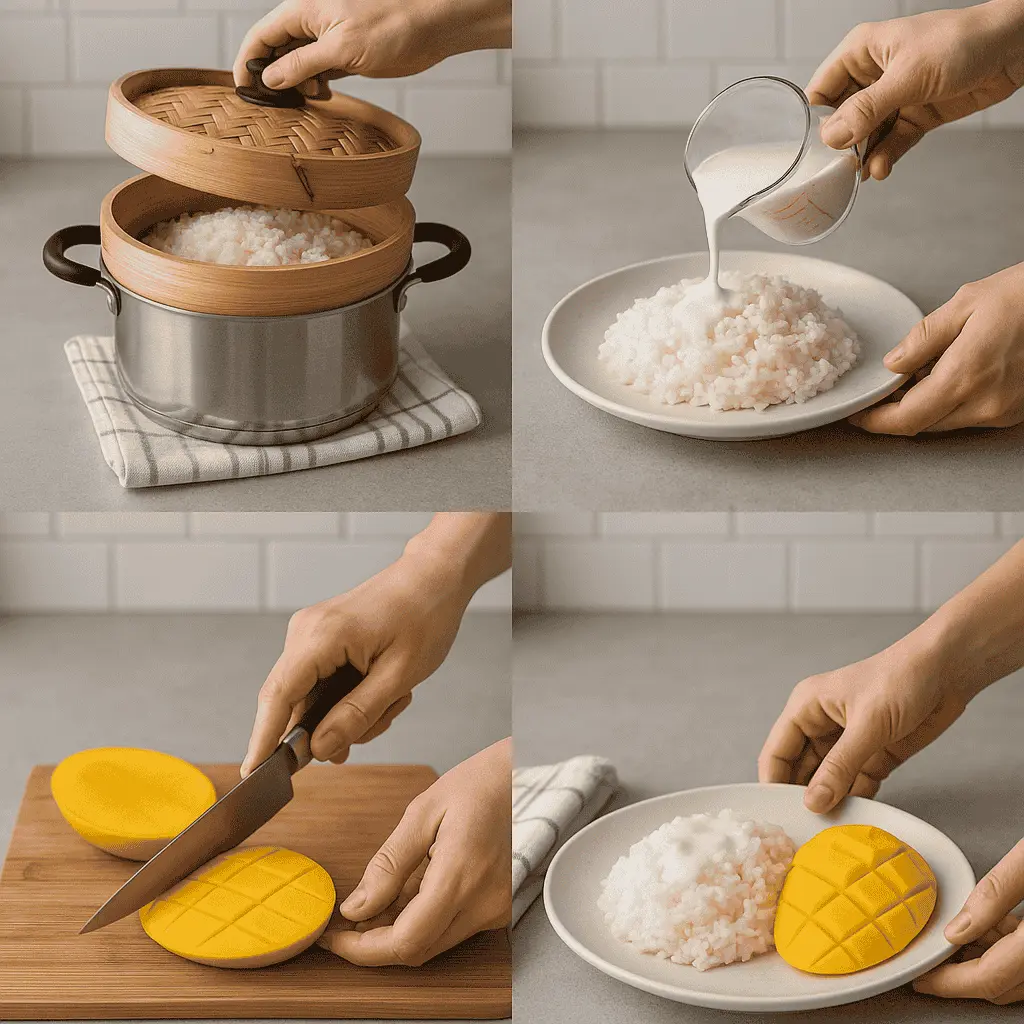
Another hit? Vietnamese Che Ba Mau, also known as rainbow dessert. This colorful glass of jelly, beans, coconut milk, and crushed ice is not only fun to make but also refreshingly satisfying. Or you can make Japanese mochi, which uses glutinous rice flour, sugar, and water, then microwave-steamed to create the chewy balls that kids and adults love.
If you’re in the mood for variety, mix and match textures. Combine chewy tapioca pearls, crunchy peanuts, or soft ube halaya (purple yam jam). For a delightful twist, check out how we balance indulgence with simplicity in our healthy dessert recipes.
What Makes Them So Easy? Ingredients & Tools Breakdown
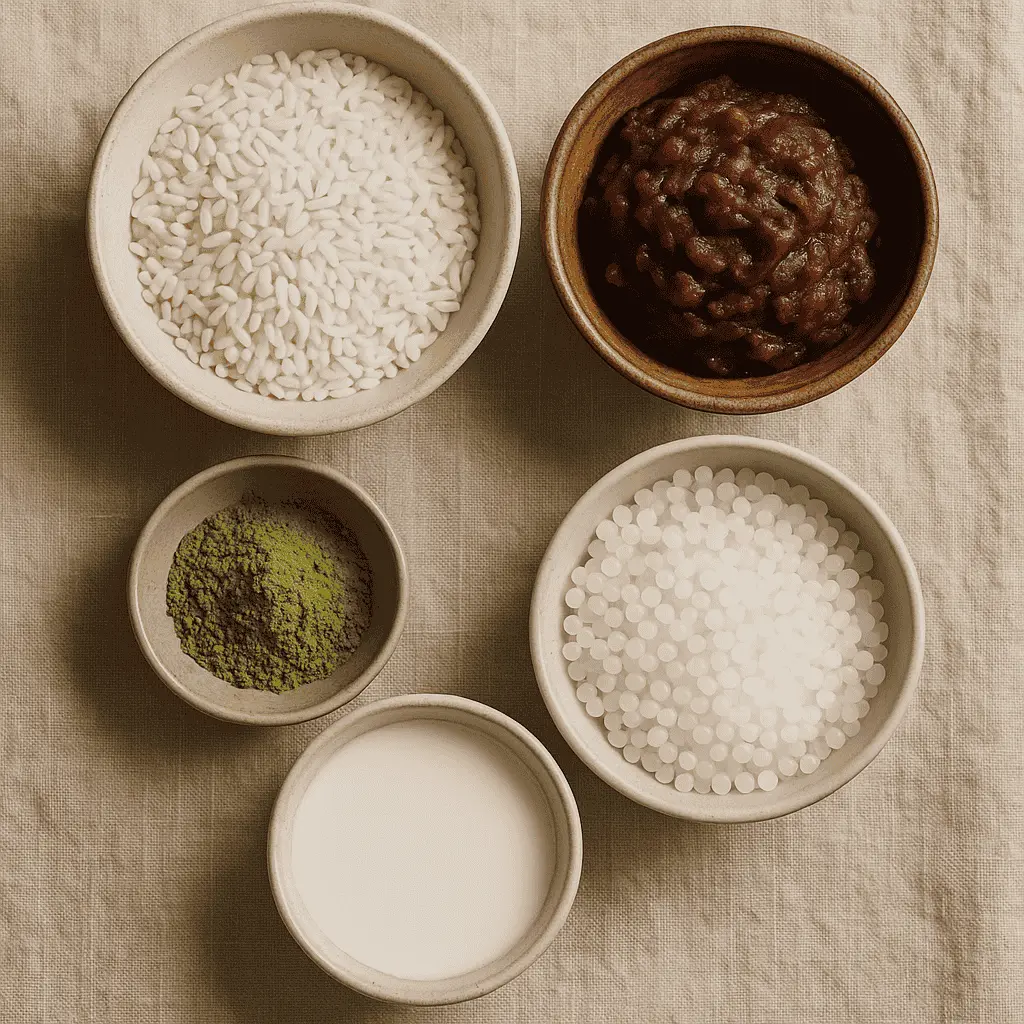
Many easy Asian desserts are built around just a few essential ingredients, most of which you can now find at any grocery store or online. Below is a quick reference table to demystify your pantry:
| Ingredient | Common Uses |
|---|---|
| Glutinous Rice | Sticky rice, mochi, rice cakes |
| Coconut Milk | Soups, puddings, ice creams |
| Tapioca Pearls | Bubble tea, layered jellies |
| Matcha Powder | Cakes, cookies, tiramisu |
| Red Bean Paste | Mooncakes, mochi, pancakes |
These ingredients store well and open the door to dozens of variations. The best part? You rarely need specialty equipment. Most recipes can be made with a saucepan, a microwave, or a simple steamer. If you’re already experimenting with bold flavors like in this seafood boil seasoning, you’ll enjoy bringing that same curiosity to dessert. Asian cuisine dessert
So whether you’re making a quick batch of sesame balls or chilling a coconut pudding in the fridge, Asian desserts make it easy to impress without stress.
Top 10 Traditional Asian Cuisine Dessert You Must Try
What Are the Top 10 Asian Desserts?
When you explore Asian cuisine dessert culture, it’s impossible to ignore the iconic classics that have stood the test of time. These aren’t just sweets they’re experiences. Each treat on this list offers a glimpse into a region’s flavor, tradition, and texture obsession. If you’re building your own asian desserts list, start with these:
- Mochi (Japan) – Soft rice cake filled with red bean paste or ice cream. Chewy, compact, and totally addicting.
- Gulab Jamun (India) – Deep-fried milk balls soaked in fragrant rose syrup. Warm and sticky sweet.
- Mooncake (China) – Dense pastry often filled with lotus seed paste or salted egg yolk. Eaten during the Mid-Autumn Festival.
- Bingsu (Korea) – A shaved ice mountain topped with condensed milk, fruit, and sometimes red beans or cereal.
- Halo-Halo (Philippines) – An icy mix of jellies, fruits, beans, leche flan, and purple yam ice cream.
- Klepon (Indonesia) – Green glutinous rice balls filled with palm sugar and rolled in coconut.
- Mango Sticky Rice (Thailand) – A harmony of ripe mango, sticky rice, and sweet coconut milk.
- Wagashi (Japan) – Traditional confections often served with tea, crafted with natural colors and subtle sweetness.
- Tub Tim Grob (Thailand) – Water chestnuts in syrup with coconut milk, known as “red rubies.”
- Kheer (India) – Creamy rice pudding flavored with cardamom, saffron, and sometimes topped with nuts.
You can explore more from regions like Vietnam, Laos, and Malaysia in our evolving Asian desserts list, especially if you’re after vibrant color and refreshing flavor combinations.
The Cultural Stories Behind These Sweet Treats
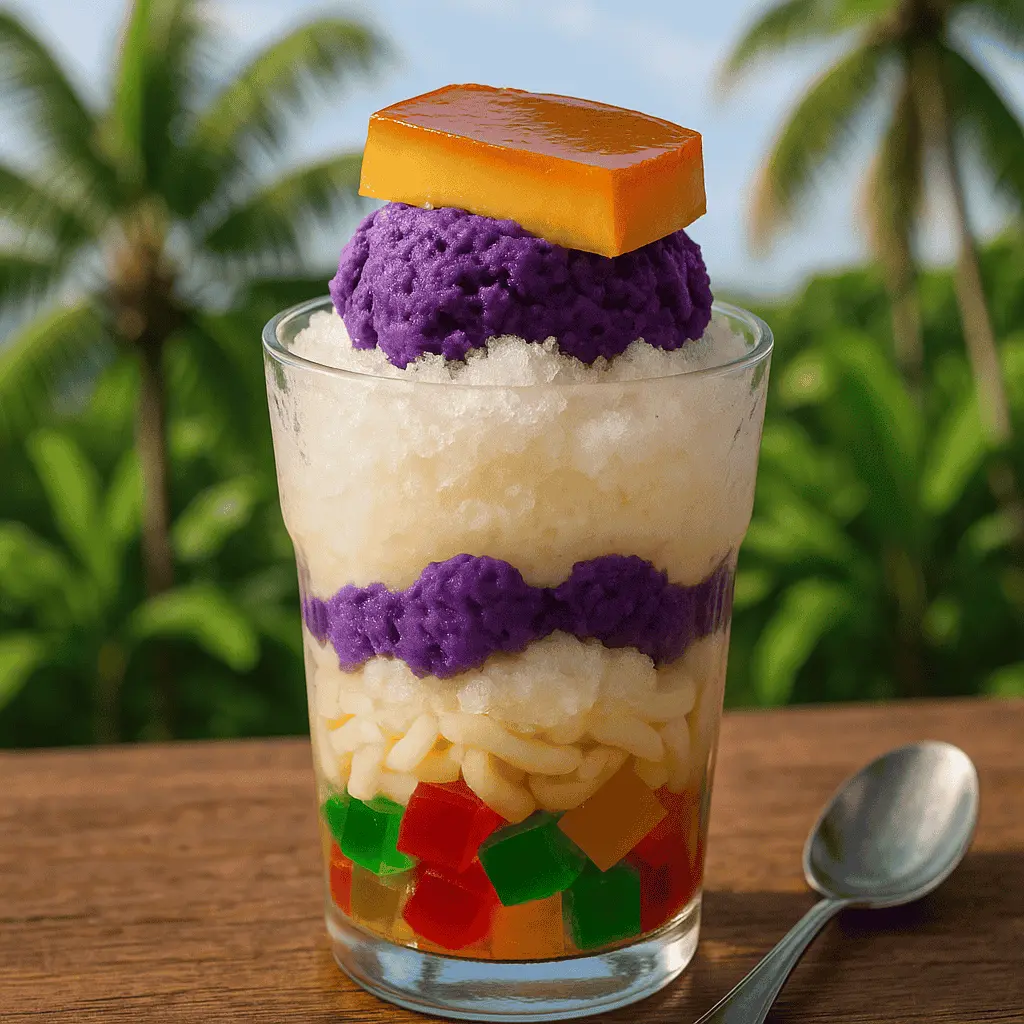
Many of these desserts aren’t just beloved they’re meaningful. Take mooncakes, for instance. Eaten during China’s Mid-Autumn Festival, they symbolize reunion and harmony. Or wagashi, the edible art of Japan, often reflects the seasons and is served during tea ceremonies to balance the bitterness of matcha. Asian cuisine dessert
Even halo-halo, which literally means “mix-mix” in Tagalog, tells a story of Filipino resilience and creativity layering everyday ingredients into something visually stunning and comforting. Gulab jamun, with its roots in Persia and widespread popularity in South Asia, is traditionally served at weddings, symbolizing celebration and sweetness in life.
When you enjoy these traditional Asian desserts, you’re not just tasting flavors you’re experiencing stories. From rituals to street food stalls, these treats offer more than sugar they offer identity.
Want something new? Our readers often love trying bold dishes like this blackened seasoning blend before finishing off the meal with something sweet and classic like sticky rice or wagashi.
The Best of Asian Cuisine Dessert – Top 50 Overview
Desserts by Region: Southeast, East, South, and Central Asia
Asia is vast and so is its dessert repertoire. If you’re building your own top 50 Asian desserts list, organizing by region helps uncover the unique tastes and textures across the continent. Here’s a quick regional breakdown to inspire your next sweet adventure:
Southeast Asia
- Vietnam: Chè Ba Mau, Bánh Da Lợn, Bánh Chuối (banana cake)
- Thailand: Mango Sticky Rice, Tub Tim Grob, Foi Thong
- Philippines: Leche Flan, Halo-Halo, Bibingka
- Indonesia: Klepon, Dadar Gulung, Es Cendol
- Malaysia: Kuih Seri Muka, Ais Kacang
East Asia
- Japan: Mochi, Dorayaki, Daifuku, Wagashi, Taiyaki
- China: Mooncake, Tangyuan, Almond Jelly
- Korea: Bingsu, Hotteok, Yakgwa
South Asia
- India: Gulab Jamun, Kheer, Rasgulla, Barfi, Jalebi
- Pakistan: Zarda, Gajar ka Halwa, Suji ka Halwa
- Sri Lanka: Wattalappam, Kavum, Kokis
Central Asia & The Middle East (Cross-cultural influences)
- Baklava, Lokum (Turkish delight), Sheer Khurma
Each of these desserts showcases native ingredients like rice, beans, tropical fruits, sesame, and dairy, adjusted to local tastes and traditions. For a more visual breakdown and detailed inspiration, be sure to check our rotating dessert features on the homepage.
Modern Twists on Traditional Sweets
Today’s kitchens love fusing classic recipes with creative upgrades. In Japan, you’ll find matcha tiramisu and mochi ice cream. In India, saffron cheesecakes and chai spice cookies are becoming popular. Thailand’s coconut milk popsicles offer a vegan twist on traditional flavors.
Even global influences like layered trifles or no-bake bars now incorporate Asian ingredients like red bean, black sesame, and taro. Curious about health-friendly variations? Our community favorites include low-sugar coconut puddings and baked banana rice cakes both featured in our healthy dessert recipes.
And if you’re into culinary creativity, consider pairing a bold dinner like our seafood seasoning guide with a cooling, traditional dessert like halo-halo or bingsu.
Asian cuisine desserts aren’t locked in the past they’re evolving. And that makes them even more exciting to explore.
For more information follow me in Medium and Pinterest
Conclusion
Asian cuisine dessert is a world of color, contrast, and comfort. Whether you’re digging into chewy mochi or layering halo-halo on a summer day, these treats prove that dessert doesn’t have to be complicated to be delicious. With easy recipes, meaningful stories, and regional variety, there’s something for everyone from curious beginners to seasoned sweet-tooth pros. Explore more at Perfect’s Recipe and remember: good food doesn’t have to wait.
FAQ :
What are popular Asian desserts?
Popular Asian desserts include mochi from Japan, mango sticky rice from Thailand, halo-halo from the Philippines, gulab jamun from India, and mooncakes from China. Each dish showcases unique regional ingredients like coconut milk, red beans, glutinous rice, and tropical fruits, creating diverse textures and rich flavors. Asian cuisine dessert
Where can I find Asian cuisine dessert recipes?
You can find authentic and easy Asian cuisine dessert recipes on food blogs, cookbooks, or curated sites like Perfect’s Recipe, where real-life, tested recipes are simplified for home cooks. We also offer ingredient breakdowns and step-by-step guides to make desserts like klepon or kheer in under 30 minutes.
Are there Asian cuisine dessert recipes that are easy to make?
Absolutely. Many Asian cuisine dessert recipes easy enough for beginners include mango sticky rice, dalgona candy, mochi, and coconut tapioca pudding. Most require minimal equipment and only a few ingredients like glutinous rice, sugar, and coconut milk. Asian cuisine dessert
What are the top 10 Asian desserts?
The top 10 Asian desserts often cited include: 1) Mochi, 2) Gulab Jamun, 3) Mooncake, 4) Halo-Halo, 5) Mango Sticky Rice, 6) Klepon, 7) Bingsu, 8) Dorayaki, 9) Kheer, and 10) Tub Tim Grob. Each has a unique cultural story and distinct taste profile, making them favorites around the world.